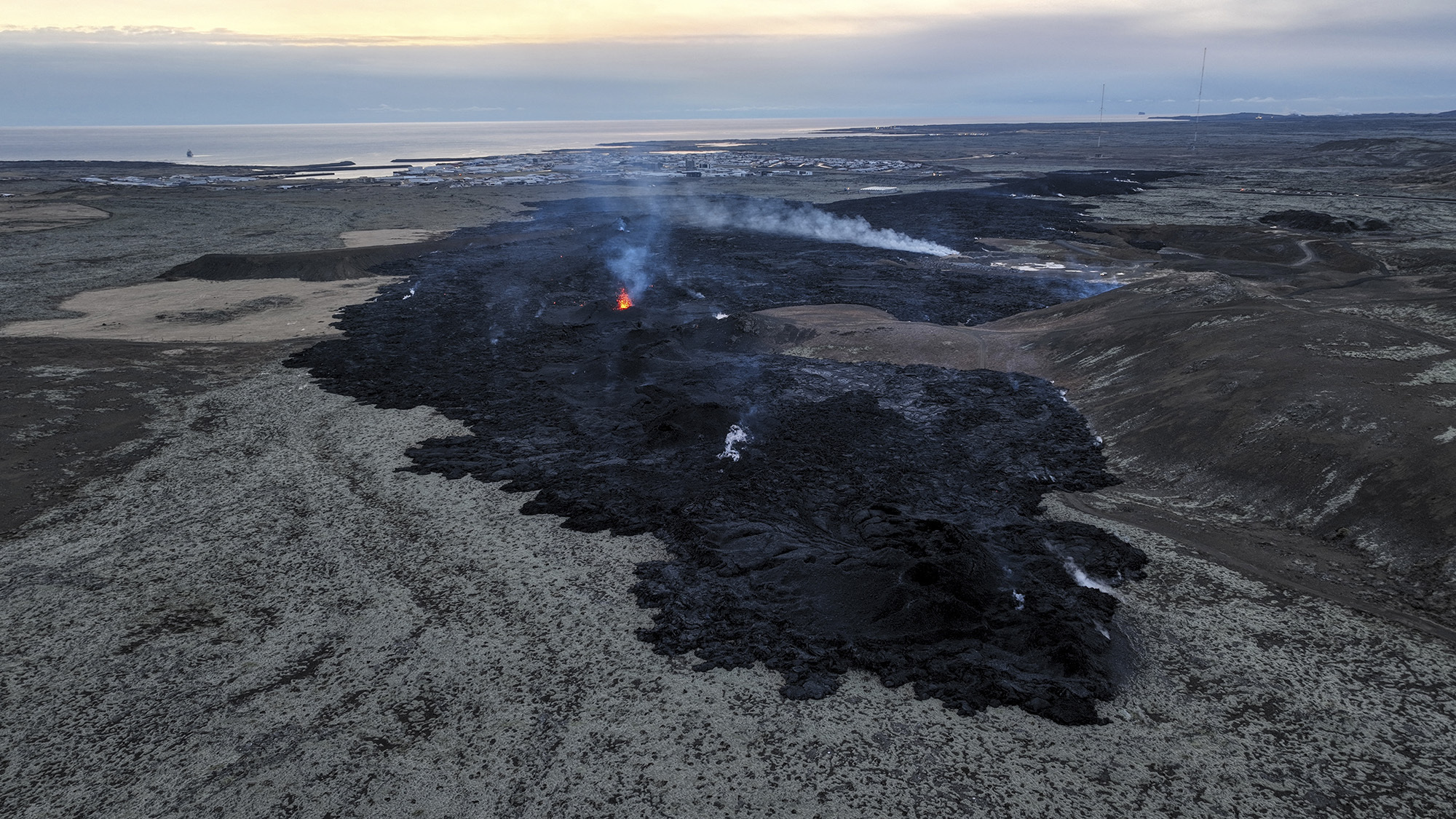

Lava flows in southwestern Iceland appear to be slowing down, after the second volcanic eruption in one month on January 14. Molten lava destroyed multiple homes in the town of Grindavík, which had been evacuated hours before. There is no danger to the rest of the island, home to roughly 380,000 people and 33 active volcano systems.
[Related: How the Tonga eruption rang Earth ‘like a bell’]
Iceland sits over the Mid-Atlantic Ridge, the boundary between the Eurasian and North American tectonic plates. The country averages about one volcanic eruption every four to five years. The most disruptive eruption in recent times was the 2010 eruption of the Eyjafjallajokull volcano. Enormous clouds of ash spewed into the atmosphere, disrupting air travel across the Atlantic Ocean for months. This eruption is not expected to push large quantities of ash into the air and operations at Keflavík Airport are continuing as normal.
According to Iceland’s Meteorological Office (IMO), it is still too soon to officially declare the danger from this most recent eruption over and difficult to estimate how long it will last. The IMO said that their GPS sensors continued to detect that the magma conduit beneath Grindavík is expanding in the area. Thermal drone images taken show that the fissures previously mapped southwest of Grindavík have enlarged and considerable hazards still remain in the area.
Following the eruption, a series of earthquakes began at 3:00 a.m. local time near Sundhnúksgígar. The earthquakes then migrated southwest towards Grindavík. This seismic swarm opened a lava-spewing fissure by 8 a.m. The fissure spread to within 3,000 feet of the fishing town, which is about 30 miles southwest of the capital city Reykjavik. By noon, another fissure had opened north of Grindavík.
Icelandic University volcanologist Þorvaldur Þórðarson, told the Iceland Monitor that eruptive activity shifted from the upper fissure and is creeping closer to Grindavík. If this continues, there are two possible scenarios.
“One is that if the shift is made, then the activity will continue in the lower fissure,” he said. In this situation, the lava will continue to head towards the town.
“The other scenario, which is even worse, is that this is an addition to what is happening in the upper fissure,” he said. “This increases the eruption.”
An operation to rescue about 270 sheep stranded in more dangerous locations has also begun. A board member of the Animal Welfare Association of Iceland Anna Berg Samúelsdóttir told The Guardian that authorities were not aware that livestock were still in the danger area initially.
“We noticed that very expensive things were prioritized higher than animal life, such as such as big machines. They were working on Sunday. The animals were standing inside locked pens,” she said. “They have no water in the pens. There were some animals rescued yesterday evening [by] the owner of 30 sheep. But he had to a fight with the authorities to do it.”
[Related: Geologists: We’re not ready for volcanoes.]
There are no known fatalities from the eruption, but a workman is missing after reportedly falling into a crack opened by the volcano, according to the Associated Press.
In a televised address on January 14, President Gudni Johannesson said that “a daunting period of upheaval has begun on the Reykjanes Peninsula,” where the Svartsengi volcanic system has awakened after close to 800 years. Johannesson urged people to “stand together and have compassion for those who cannot be in their homes.”
Grindavík is home to about 3,800 people that was evacuated in November 2023, when a series of earthquakes opened large cracks in the Earth. The volcano eventually erupted on December 18.